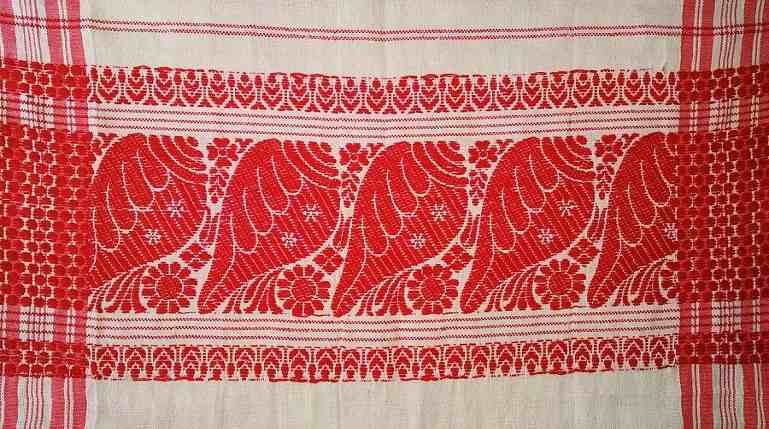Cotton Gamosa is a special identity of the Assamese Society. This little bit of fabric has high regard and a wide utilization in the Assamese culture. Gamosa is one extraordinary fabric article in it’s utilization and looks. Except Assam Gamosa is found nowhere in India & World. Gamosa is otherwise called ‘Bihuwaan’, as it is a unavoidable piece for Bihu celebration of Assam.
Gamosa is of a rectangular shape, around 2 feet in width and 4 feet in lenght, closer to the state of a towel. It’s white in shading with red fringes. A couple of fringes on the width, are woven with masterful weaving. The plan weaved on this specific piece is of the Traditional Assamese Xorai(an offering plate with a remain at the base). The crude material utilized for weaving Gamosa is cotton. Be that as it may, some gamosa utilized in extraordinary occassions are made of Silk as well. Despite the fact that it’s pretty basic, weavers show their imaginative abilities in the themes of a gamosa.
The Gamosa is essentially used to wipe the body after a shower (a demonstration of cleansing), in any case, the utilization reaches out to more than that. A Gamosa is utilized to cover the sacred writings or the cowl in the Prayer hall (Naamghar). The Gamosa is utilized by Bihu artists where they fold it over their heads in a solitary bunch. Ranchers use it as a waistcloth (tongali) or an undergarment (suriya). People drape the Gamosa around their neck while praying in the prayer hall (Naamghar).
Visitors are offered a gamosa(referred to as bihuwaan for this situation) and tamul (betel nut) as a sign of respect.
